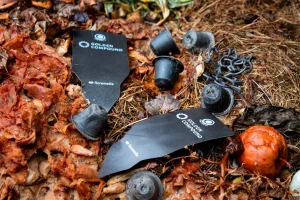The Packaging and Packaging Waste Regulation (PPWR) is a new EU regulation that will come into force in 2025, with some provisions being phased in by 2030. It aims to improve the sustainability of packaging, reduce packaging waste and harmonise regulations across EU member states.
GC pro and GC green: Solutions by Golden Compound
Golden Compound offers two innovative material lines, GC pro and GC green, which are optimally aligned with PPWR requirements:
- • GC pro: This durable material line is specifically designed for reusable packaging and closed-loop recycling systems. With excellent recyclability, it helps companies meet the high recy-cling and reuse targets set by PPWR and contribute to a circular economy. The material is based on either polypropylene or post-consumer recycled polypropylene (PCR).
- • GC green: This biodegradable material line is primarily based on BioPBS or PHA. Selected types are certified according to their specific application scenarios, including OK compost HOME or OK biodegradable SOIL by TÜV Austria. While GC green meets the requirements for reusable packaging in certain applications, its primary focus is on a high biobased content and complete biodegradability.
What is “packaging”?
In PPWR, packaging refers to products designed to contain, protect, transport or display goods. It is divided into primary, secondary and tertiary packaging - sales, group and transport packaging. The regulation aims to reduce waste and promote a circular economy through clear guidelines.
End-of-Life
- GC pro:
This material line is designed for reuse applications, and its formulations incorporate waste materials such as sunflower seed hull fibres, giving them new value.
GC pro products or materials can be returned to us for recycling, as long as there is no of-ficial collection system for NFC materials in the yellow bin. Alternatively, they can be dis-posed of in the yellow bin, but are likely to be sent for energy recovery. When disposed of in the black bin (general waste), GC pro's high bio-based content makes it a more envi-ronmentally friendly option than traditional fossil-based plastics, which are often inciner-ated. This ensures the responsible management of materials, either through closed loop recycling or energy recovery.


- GC green:
If home composting or soil degradation is feasible for the intended application—such as with our biodegradable plant pots—this is the most environmentally friendly disposal op-tion. If not, GC green can be safely disposed of in the black bin (general waste) for energy re-covery.
According to the PPWR, packaging must be disposed of in the yellow bin. For GC green products, this is not a problem as they are reliably separated in the recycling stream and ul-timately sent for energy recovery.
It is not recommended to dispose of them in organic waste bins, as compostable plastics are often indistinguishable from conventional plastics. However, as local waste management companies decide whether to accept certified compostable plastics, we recommend you check with your local waste management company.
Please do not dispose of GC green in nature, landfills, forests, or bodies of water.



Penalties and Fines for Non-Compliance with PPWR
Starting in January 2025, PPWR will be enforced step by step. Companies that fail to comply with its regulations may face significant fines or penalties. Businesses must ensure they meet recycling quo-tas, correctly label packaging materials, and reduce packaging volume as mandated by the regula-tion.
The exact amount of fines will be determined by national authorities. In addition to financial penal-ties, companies may also face market access restrictions. Therefore, it is crucial for businesses to take proactive steps to ensure compliance and avoid potential penalties.
Conclusion
By using GC pro and GC green, companies can meet PPWR requirements while avoiding fines and contributing to a more sustainable future. These material solutions help reduce packaging waste, promote circular economy principles, and ensure efficient resource utilization—all in compliance with regulatory demands. Proper disposal and responsible recycling are essential steps toward se-curing a sustainable future for the next generations.




